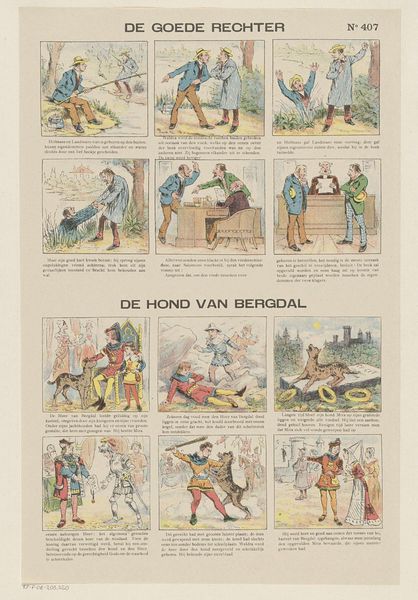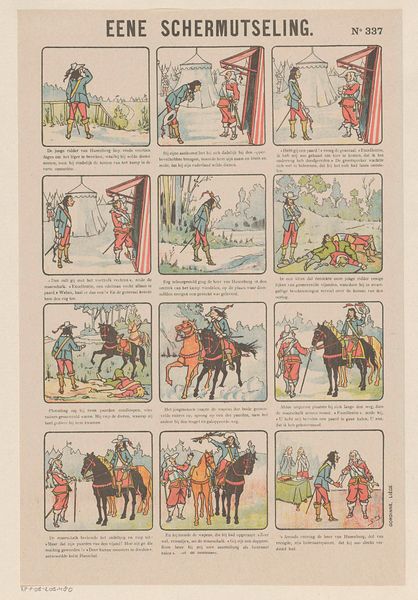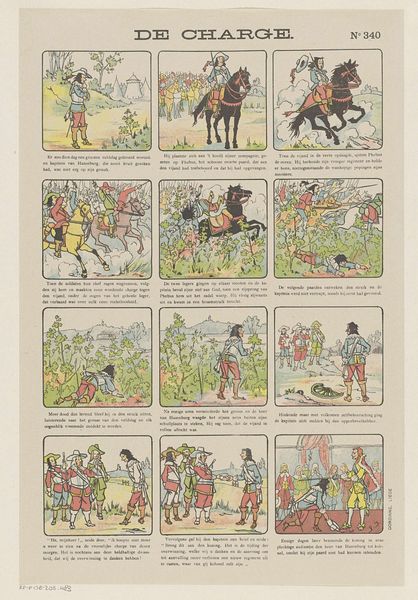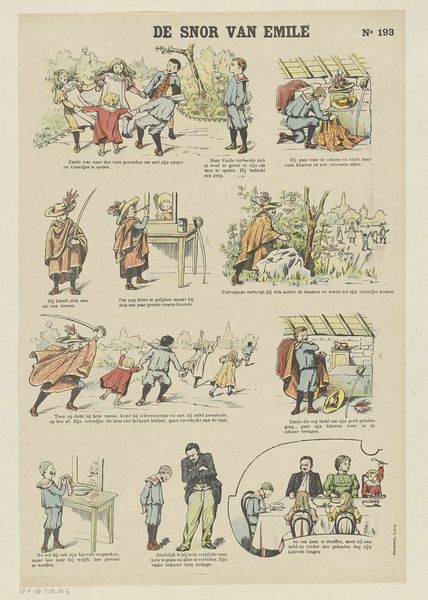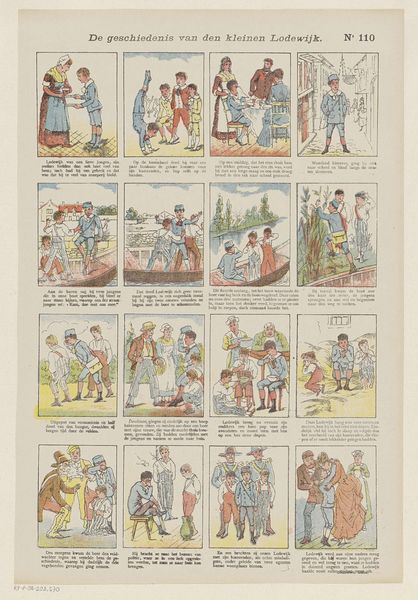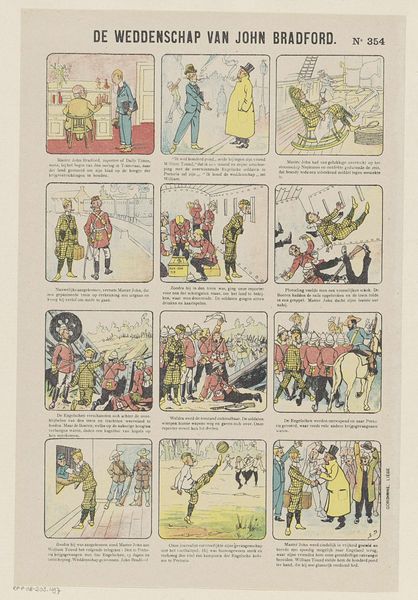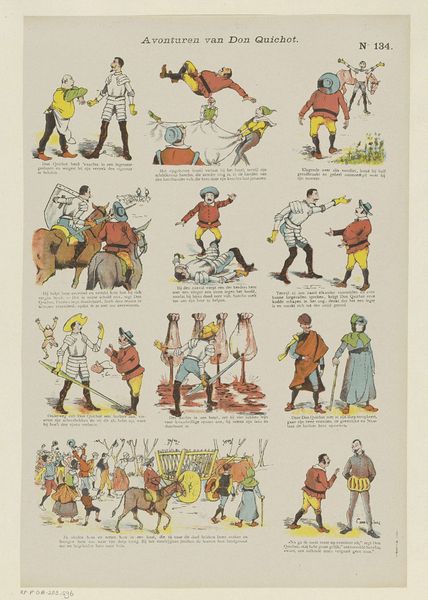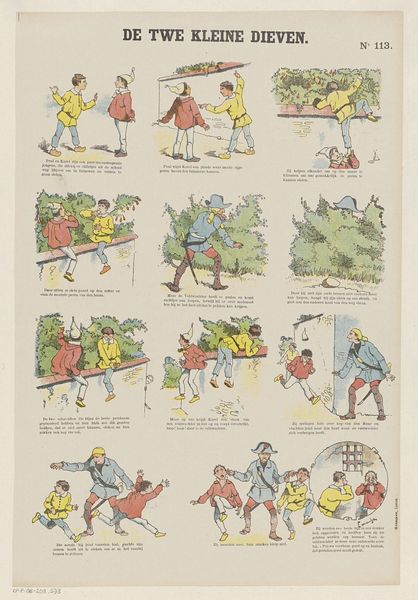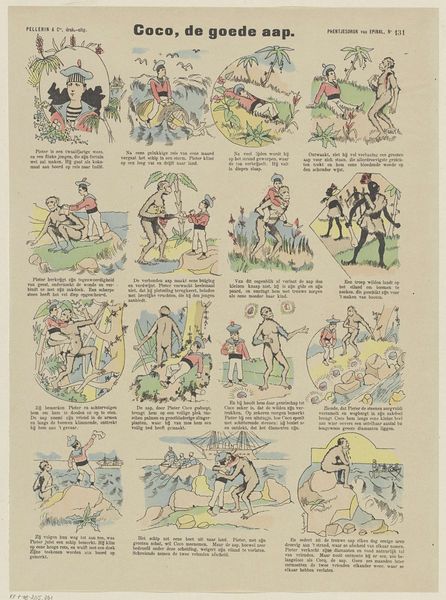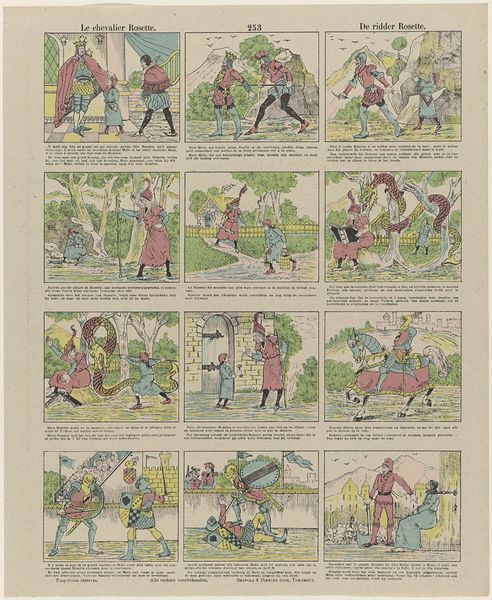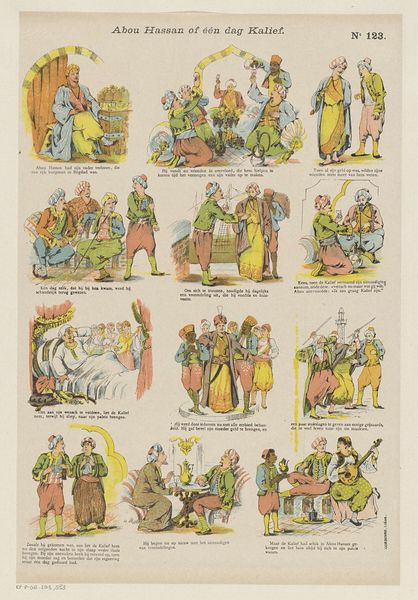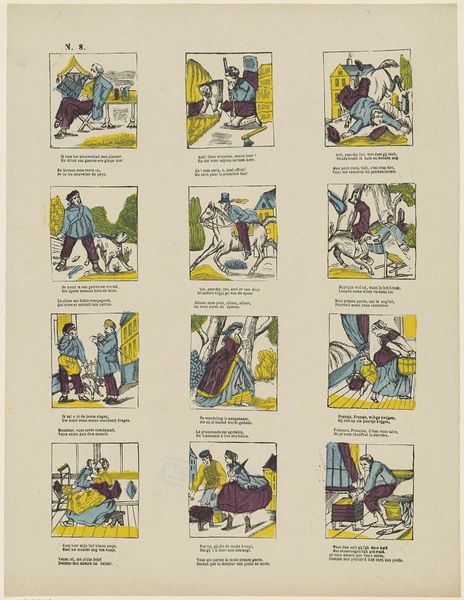
graphic-art, lithograph, print
graphic-art
comic strip sketch
narrative-art
comic strip
lithograph
figuration
comic
line
genre-painting
Dimensions: height 400 mm, width 264 mm
Copyright: Rijks Museum: Open Domain
Curator: This piece, residing here at the Rijksmuseum, is titled "Twaalf ambachten, dertien ongelukken / De verborgen schat," which translates roughly to "Twelve trades, thirteen misfortunes / The Hidden Treasure." It is from somewhere between 1894 and 1959. Editor: It's strangely charming, with all its little scenes packed together like a, well, like a comic strip, really. The lithographic print gives it that slightly aged, tactile feel, despite its crisp lines. Curator: Precisely, the lithographic process allows for detailed reproduction, essential for capturing the narrative flow within each panel. This print functions as both a work of graphic art and social commentary through visual storytelling. It highlights the pursuit of wealth and how ambition leads to foolishness and downfalls, showcasing scenarios that can easily resonate across cultural boundaries. Editor: Absolutely. I see the themes of labor and disillusionment jumping right out. These small vignettes show various professions, the pursuit of that “hidden treasure," always resulting in comical mishaps and financial ruin. Think about the labour and material context in lithography too - the stone, the ink, the press… it is about repetitive reproduction of stories, here for mass consumption. What does that mean in terms of democratization of knowledge? Or commercializing cautionary tales? Curator: It’s a moralising fable wrapped up in accessible imagery. The political messaging isn't overtly pronounced, yet you feel its presence implicitly – a subtle jab at those caught in a capitalist cycle? The imagery reminds one of traditional emblem books, circulating knowledge and morality through affordable media. Editor: I agree. By understanding the printmaking process, and placing it in its historical context, we can see how accessible art forms like this allowed such tales and the subtle social critique within to spread much wider than the fine arts, engaging everyday laborers with potentially radical or subversive ideas. It also provides an ironic view into our consumer behaviors, showing the pitfalls we stumble into by the very system meant to ‘aid’ our pursuits. Curator: Seeing it in this light offers insight into how even seemingly simple comic prints contribute to shaping collective cultural understandings of work, greed, and success. Editor: Exactly. The materiality here underscores the human struggle represented, offering insight into labour and our complicated relationship with fortune.
Comments
No comments
Be the first to comment and join the conversation on the ultimate creative platform.
